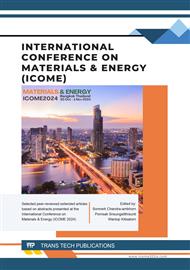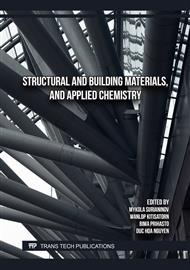p.63
p.75
p.85
p.93
p.101
p.109
p.115
p.123
p.133
Development of Synthetic Rubber Flooring from Bio-Based Polyurethane
Abstract:
This study explores the synthesis and application of bio-based polyurethane (bio-PU) as a sustainable alternative to synthetic polyurethane (PU) in rubber polyurethane flooring. Bio-PU was synthesized by converting epoxidized palm oil (EPO) to bio-polyols using polysorbate20 at a ratio of 3:1, which was then reacted with polymeric methylene diphenyl diisocyanate (pMDI) to produce bio-PU. The bio-PU was blended with commercial PU and rubber granulate in concentrations of 10%, 20%, and 30%, with the aim of developing eco-friendly flooring materials. Key properties, including hydroxyl value, chemical functional groups (via FT-IR), force reduction, vertical deformation, tensile strength, elongation at break, and UV weathering resistance, were evaluated. The results demonstrated that rubber polyurethane flooring containing 30% bio-PU exhibited comparable or superior mechanical properties to flooring made with synthetic PU, meeting industry standards for force reduction, vertical deformation, and UV resistance. This study concludes that bio-based PU can serve as a viable alternative for the base layer of synthetic flooring, offering both environmental benefits and reliable performance.
Info:
Periodical:
Pages:
101-108
Citation:
Online since:
December 2024
Authors:
Keywords:
Price:
Сopyright:
© 2024 Trans Tech Publications Ltd. All Rights Reserved
Share:
Citation:



